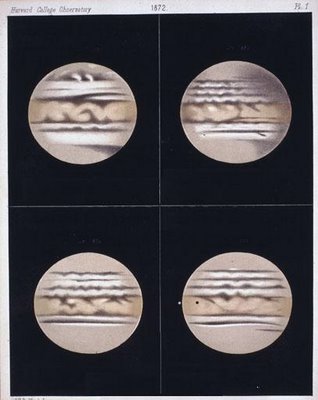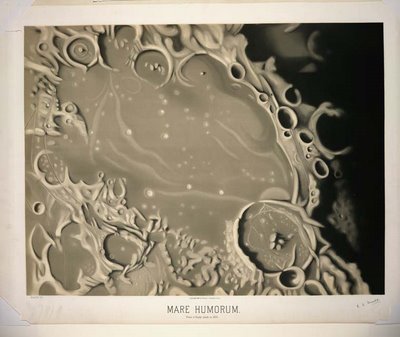"[T]hese views were produced using the [Harvard] observatory's 15-inch refracting telescope made by Merz of Munich, Germany. They show the planet's characteristic cloud belts with festoon structures within that have been now been resolved in detail by robot spacecrafts such as Voyager. At this time, drawings made at the telescope using only the eyes showed more detail than could be produced using the insensitive photographic plates then available."
Frenchman Étienne Léopold Trouvelot (1827–1895) was primarily a portrait artist when he arrived in Massachusetts in 1852. During the following 30 years that he remained in America his amateur passion for science would ensure a legacy that straddles both fame and infamy.
Trouvelot had a particular love for silkworms and he had a 4 acre plot behind his house where he cultivated a native variety. To increase production he hoped to crossbreed the regular type with a species from Europe. He brought back Gypsy Moth eggs from a trip home and so introduced a virulent pest that ravages forests in America to this day. To his (slight) credit, he realized the enormity of the problem straight away when some of the introduced moths escaped. He made it publically known, but unfortunately local entomologists did nothing at the time to eradicate them.
Trouvelot turned his attention from moths to the stars and began illustrating celestial phenomena. His drawings were so good that the Director of Harvard College Observatory put Trouvelot on staff where he gained access to their powerful telescope.
He would go on to produce some 7000 astronomical drawings and publish 50 scientific papers. His works were displayed at the Philadelphia Centennial Exposition in 1876 and Trouvelot began to assemble his best drawings for wider publication. In 1881 a series of 15 chromolithographs were released for $125 (!) to great acclaim. He spent the last 3 years of his life back in France pursuing his fascination for solar phenomena.
- The 15 lithographs from 'Astronomical Drawings' are online at NYPL.
- NYPL also have a great site - 'Art & Actuality: Heavens Above' - with a large section on Trouvelot, his drawings, contemporary astrophotography and modern astronomical images.
- The '4 Jupiters' image above (sans watermark) comes from Science and Society - they have a few additional illustrations by Trouvelot.







No comments:
Post a Comment